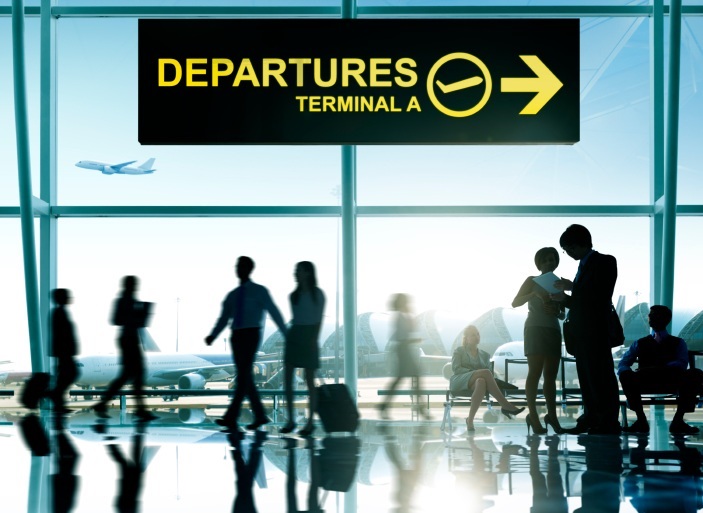Destination APEC: Travel and tourism gains benefitting business, citizens

APEC is such a dynamic region; to some degree, I feel that the rest of the world is counting on APEC for economic growth.
Despite a struggling global economic climate, travel and tourism have shown great resilience. In fact, travel and tourism are important growth engines for APEC economies to promote development and they play an important role in the recovery of the global economy.
G20 world leaders, in their meeting in Los Cabos, Mexico in June, for the first time recognized the importance of travel and tourism as a driver for growth.
In 2011, tourism generated over 120 billion jobs and contributed 8.4% of total employment in the APEC region—a number expected to rise by 1.8% this year, to more than 122 billion.
APEC’s travel and tourism also accounted for 8.3% of GDP for 2011 that is worth US$3.22 trillion.[1] This figure is forecast to rise to 9.2% of GDP by 2022.
“APEC is such a dynamic region,” said Nancy Cockerell, Policy and Research Adviser at the World Travel and Tourism Council. “To some degree, I feel that the rest of the world is counting on APEC for economic growth.”
More and more people want to travel, given an increase in flights provided by growing low-cost airlines. This includes both leisure and business trips.
For instance, Singapore registered 18% year-on-year growth in tourism receipts and listed fellow APEC economies, such as Indonesia; Australia; and Malaysia, among its top generating markets.
Chinese Taipei welcomed over six million visitors last year, increasing 9.3% from 2010. This growth was attributed to intra-regional travelers from Hong Kong, China; Japan; and the United States.
Emerging economies in the region, such as Indonesia, are experiencing a rise in household incomes. This is fueling the demand for leisure travel, which generated US$1.5 trillion last year. In addition, expanding trade in developing markets is also sustaining demand for business travel in 2011, contributing to over US$570 billion to the regional economy.[2]
“There’s a huge desire to travel in the APEC region,” said Ms. Cockerell “And with so many upwardly mobile people, APEC is a major lifeline to travel and tourism,” she added.
The region attracted over US$434 billion in 2011. This is forecast to grow by 4.1% per year and reach over US$663 billion in the ten years following.
Nine of Malaysia’s top ten tourism markets of 2011 belong to the APEC region, with Singapore, Indonesia and Thailand leading the list. Last year, Singapore’s travel and tourism registered 10.6% of its GDP and supported over 266 thousand jobs, or 8.6% of total employment.
In Indonesia, tourism contributed 9% of its GDP in 2011, welcoming a 9.2% increase in international tourist visits. The sector was also the fifth largest contributor of foreign exchange in the economy and directly responsible for creating one out of 12 jobs.
Furthermore, Peru’s tourism surpassed that of other Latin American economies with a 3.7% contribution to GDP, 120% increase in international tourist arrivals and 248% growth in revenues from 2002-2011.
APEC has keenly focused on promoting growth in travel and tourism in the region for over two decades. In 1991, the APEC Tourism Working Group (TWG) was formed to bring the region’s tourism administrators together to share information, exchange views and develop areas of cooperation on tourism trade and policies.
The group’s work is guided by the APEC Tourism Charter that constitutes the basis for tourism cooperation among APEC economies. The charter reflects a collective commitment to improve the economic, cultural, social and environmental well-being of APEC members through tourism.
Recently, the TWG finalized its Strategic Tourism Plan for 2012-2015 that aims to enhance the effectiveness of the industry, prioritizing growth of business opportunities and sustainability of tourism destinations.
Under the TWG, APEC is also delivering a host of tourism-related projects in 2012 to bolster tourism businesses and also facilitate infrastructure development. Addressing air transport and connectivity issues are among some of the projects under discussion.
Many APEC members across the Asia-Pacific have also implemented projects to further boost sustainable tourism growth within their home economies.
Peru is bolstering its tourism sector through public investment, extensive promotion and capacity building, including establishment of programs such as the “De mi tierra, un Producto” project that is based on Japan’s “One village, one product” initiative. This project seeks to promote tourism, trade, infrastructure and manufacturing in urban and rural destinations. It will also include assisting local entrepreneurs into the industry and showcasing innovative tourism products of the economy’s historical and cultural heritage.
According to Peru’s Ministry of Foreign Commerce and Tourism, “the aim is to enhance inclusive development of tourism and foreign trade in urban and rural populations that have high potential for tourism.”
Peru targets to generate an additional US$11 million from the sector by 2016. “This will benefit directly 12,000 people linked to tourism and foreign trade, and indirectly about 190,000 local people.”
Indonesia, meanwhile, is promoting inclusive development in the industry by focusing on travel facilitation and infrastructure development to ensure positive contribution of tourism to the economy. Building infrastructure and improvements in transportation services to develop tourist destinations that prioritize both domestic and international connectivity aims to increase investment and growth, and encourage participation of SMEs in developing tourist destinations.
Going forward, with a shared understanding of the importance and potential of travel and tourism to contribute to sustainable and inclusive development, APEC will continue to boost the sector and promote greater prosperity in the region.
“Tourism cuts across all working groups and all other sectors, whether we’re talking about services, skills, development, trade, immigration, investment or transport—they all work together to boost economic growth and job creation,” said Ms. Cockerell.
[1] World Travel & Tourism Council Report, Travel and Tourism Economic Impact 2012—APEC
[2] World Travel & Tourism Council Report, Travel and Tourism Economic Impact 2012—APEC

